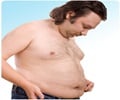As many as one in six people who took part in a study of older people who live at home were under-nourished and at risk of malnutrition.
As many as one in six people who took part in a study of older people who live at home were under-nourished and at risk of malnutrition, according to the May issue of the Journal of Clinical Nursing.
Researchers at Linkoping University, Sweden, found an overall malnutrition risk of 14.5 per cent when they studied 579 older people aged 75 and 80 as part of an ongoing study. Fifty-two per cent of the people who took part in the study were male.They found that women faced a higher overall risk and that men were more likely to be at risk if they were depressed.
At the first yearly follow-up ten per cent of the 436 people still in the study were under-nourished and faced a malnutrition risk. By the second yearly follow-up the number studied had fallen to 371 but the malnutrition risk had risen to just over 16 per cent.
The researchers continued studying the 75 year-olds for another two years, reporting malnutrition risk rates of 11 per cent (out of 157 people) at the third annual follow-up and eight per cent (out of 145 people) at the fourth.
"We carried out a wide range of physical and biochemical tests on the people who took part in the study and asked them lots of questions, including how they perceived their health and their health-related quality of life" explains Yvonne Johansson from the Department of Medical and Health Sciences at the University.
"Our aim was to discover how prevalent the problem was and identify key factors that can predict an increased risk of malnutrition among older people living at home.
Advertisement
Key findings of the study, which was carried out between 2001 and 2006 in southern Sweden, include:
Advertisement
• Three-quarters of women in the at-risk group (75 per cent) described themselves as unhealthy compared with 44 per cent of the women who were not at risk. The figures for the men were 63 per cent and 38 per cent. Men and women in the at-risk groups were more likely to be registered with a doctor.
• Women in the at risk group were more likely to live alone than women in the no risk group (63.5 per cent versus 50 per cent) but the difference in the men's group was less marked (19 per cent versus 17 per cent).
• Women in the at-risk group were more likely to be unsatisfied with contact with others (42 per cent) than women in the no risk group (16 per cent). The difference between the two male groups was less marked (25 per cent and 28 per cent).
• Men and women in the at-risk groups had lower handgrip strength than people in the no risk group.
• The risk of malnutrition was also higher in people who showed symptoms of depression. This was particularly apparent among men.
"We hope that the findings of our study will be of use to health professionals working with older people" concludes Yvonne Johansson. "They clearly show that people who feel their health is poor and show symptoms of depression face a higher risk of developing malnutrition and that the risk gets higher as people get older.
"Our population is ageing and it is vital to ensure that health professionals are looking after their nutritional health as well as caring for any medical conditions they may have. This study provides evidence of some of the key warning signs to look out for."
Source-Eurekalert
LIN














